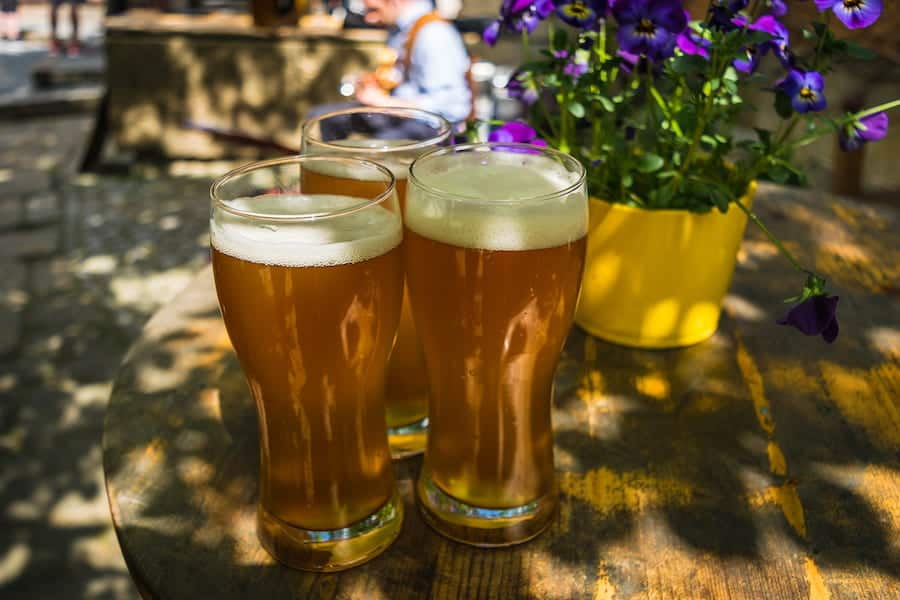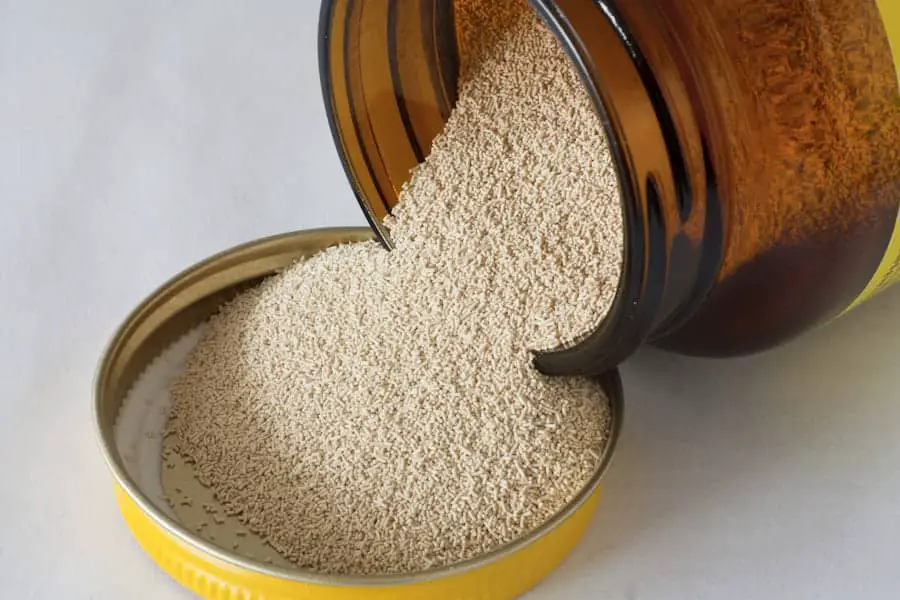If you buy something through a link in our posts, we may get a small share of the sale.
Is your fermentation process stalled, and you don’t know how to restart it? Adding yeast at the beginning of fermentation or when restarting a stalled fermentation will help improve the beer’s flavor and attain high alcohol levels. This guide details everything you need to know on how to use yeast energizers in the fermentation process.
Contents
How to Use a Yeast Energizer to Fix a Stuck Fermentation Process
In many cases, the fermentation process stalls due to too low temperatures. Bring the fermenter to a room temperature of around 68 to 70 degrees Fahrenheit to get the process going once again. If this doesn’t work, open up the fermenter and stir the yeast using a sanitized spoon to arouse it again.
If the yeast doesn’t get going even after stirring it, you can consider adding some yeast energizer into the beer. Adding around 1/2 teaspoon of yeast energizer per gallon of beer and stirring it might get the fermentation process going once again. However, many brewers don’t recommend adding a yeast energizer at this stage.

Typically, adding a yeast energizer at this stage might cause leftover vitamins, which might stimulate spoilage microbes. If this still doesn’t work, you can rack off the yeast and pitch a highly active yeast strain. Pitch a yeast starter as the final resort if everything fails to work.
Add the Yeast Energizer
Once you have decided to use the yeast energizer, the next step is to know how to add it. Put some warm water in a container or a large bowl and add the energizer.
Add the solution to the wort once the energizer is wholly dissolved in the warm water. It is advisable to add the solution into the wort around 10 to 15 minutes remaining.
Avoid Adding Too Much or Too Little Yeast Energizer
Although the yeast energizer comes with instructions on the amount you should use, it is certainly possible to add too much of it. Going a bit under or over the instructed quantity doesn’t make a big difference.
However, if the yeast energizer is too much, it may not eliminate it, causing an off-taste in the final product. On the other hand, too little yeast energizer might mean the yeast will not get sufficient nutrients to help it finish the fermentation.
However, this can only happen if you plan to brew a high-gravity beer. The optimum amount of yeast energizer to use will depend on your desired ABV and your expected final gravity of the beer. It may also vary with the product, so you should follow the instructions of the energizer you are using.
Ingredients in a Yeast Energizer
A yeast energizer is a blend of nutrients that help restart or stimulate a stalled fermentation. Yeast Energizers are used for speeding up the fermentation process. A yeast energizer contains nutrients lacking in many herbs and fruits that make up beer recipes.
They are also used to improve the efficiency of the fermentation process, increasing the final gravity or the alcohol content of the batch. Besides, yeast energizers can help minimize the production of fusel alcohol. Hydrogen Sulphide is responsible for the bad taste and the rotten egg smell.
On the other hand, fusel alcohol causes a burning sensation attributed to hangovers. This hydrogen sulfide and fusel alcohol problem are mainly caused by yeast stressing due to high temperatures or too much sugar in the wort. Here are some of the ingredients contained in a yeast energizer.
- Tricalcium phosphate
- Vitamin B
- Yeast hulls
- Diammonium phosphate
- Magnesium sulfate

How Do These Ingredients Affect the Taste of Beer?
Although many brewers debate about the effect of yeast energizers on beer taste, the impact is fairly negligible. Other factors in the brewing process, such as the grain profile and the number of hops used, will significantly affect beer taste.
That means you don’t have to factor in the impact of a yeast energizer on the taste of beer when deciding whether to use one. Also, the yeast energizer is the only solution to restarting a stalled fermentation, and you won’t have a choice if the process stalls.
How Do These Ingredients Differ From Those in a Yeast Nutrient?
Although many people confuse these two, a yeast energizer is somewhat different from a yeast nutrient. A yeast nutrient is composed of minerals and vitamins such as ammonium phosphate and nitrogen, and its purpose is to help the yeast develop and ferment.
The phosphate helps in the yeast’s energetic requirements, while the nitrogen helps to develop and generate the amino acids. Some yeast nutrients are urea as a nitrogen source but not phosphorus.
On the other hand, a yeast energizer is more of a catalyst that helps to restart a stalled fermentation. Many yeast energizer ingredients are effective when used within 24 hours after pitching, unlike yeast nutrients that should be added before pitching.
When to Add a Nutrient or an Energizer
Grape concentrate and malt extracts contain lots of sugar and you won’t need either the yeast energizer or the yeast nutrient under normal brewing circumstances of beers. If the yeast lacks sufficient oxygen to develop amino acids, it uses the sulfur-based ones, producing hydrogen sulfide.
Adding a nitrogen source in the fermentation process prevents this from happening. Nitrogen insufficiency might also hinder how the yeast in beer reproduces during the fermentation process. Typically, a higher rate of yeast reproduction translates into a higher fermentation rate.
Also, sufficient nitrogen helps the yeast to generate higher natural enzyme levels. Yeast Energizer is more preferable to yeast nutrient in many brewing situations as it provides nitrogen from various nutrients, unlike yeast nutrient that provides nitrogen from phosphate only.
When Should I Add the Yeast Energizer?
Here are some situations where adding a yeast energizer might be necessary:
- You should add the yeast energizer at the beginning or during the last 10 minutes if you boil.
- You can consider pitching it simultaneously with the yeast if you are doing a malt kit.
- If you are sure the fermentation is not complete, maybe because of a much lower final gravity than you expected, you can add the yeast energizer to re-ignite the performance of the yeast. However, you will need to ensure that your carboy or drum has adequate fermentation temperature before adding the yeast energizer. For example, the yeast might have gone to sleep if your brewing shed is cold, and you might think the fermentation has stalled.
- The yeast energizer comes with labeled instructions; however, add a ¼ -½ teaspoon of yeast energizer per gallon in these cases.
What Can I Use in Place of a Yeast Energizer?
Although you cannot make a perfect substitute for yeast energizer, try the following:
- A cup of strong black coffee
- Lime or orange peel
- Boil grape nuts in water, strain, and add the liquid to the must
- A cup of chopped raisins
- Boil the bread yeast in water for around 15 minutes to kill it
Should I Boil After Adding Yeast Energizer?
Boiling after adding the yeast energizer is unnecessary, but the timing is important. Although many people claim it is important to boil the yeast energizer to sanitize it, it is not the case because the yeast will consume the harmful bacteria.
However, if you are still unsure whether the yeast will consume the harmful bacteria, there is no harm in boiling it for 10 to 15 minutes. Some yeast energizers give instructions on how much time should be left in the boil before you add them.

Frequently Asked Questions
Can I Add the Yeast Energizer in the Secondary Fermentation?
Most of the fermentation is complete at this stage, and adding a yeast energizer might cause the excess nutrients to be off-taste.
Also, the fermentation process might continue even after bottling the beer, causing an eruption of cans and bottles. That means adding a yeast energizer during the secondary fermentation stage may lead to more harm than good.
What Is the Right Amount of Yeast Energizer to Use?
You should add approximately a quarter teaspoon of yeast energizer into one gallon of beer to restart a stalled fermentation or speed up a slow fermentation.
Can a Yeast Energizer Go Bad?
Most yeast energizers that you can purchase from brewing stores are ureas that meet food-grade standards. That means if you store a yeast energizer properly, it will last you more than five years.
Final Thoughts
A yeast energizer is essential for restarting a stalled fermentation or strengthening an existing one. You can use it on mead and beer. The above tips on how to use a yeast energizer will help you determine the amount to add and when to add it.

